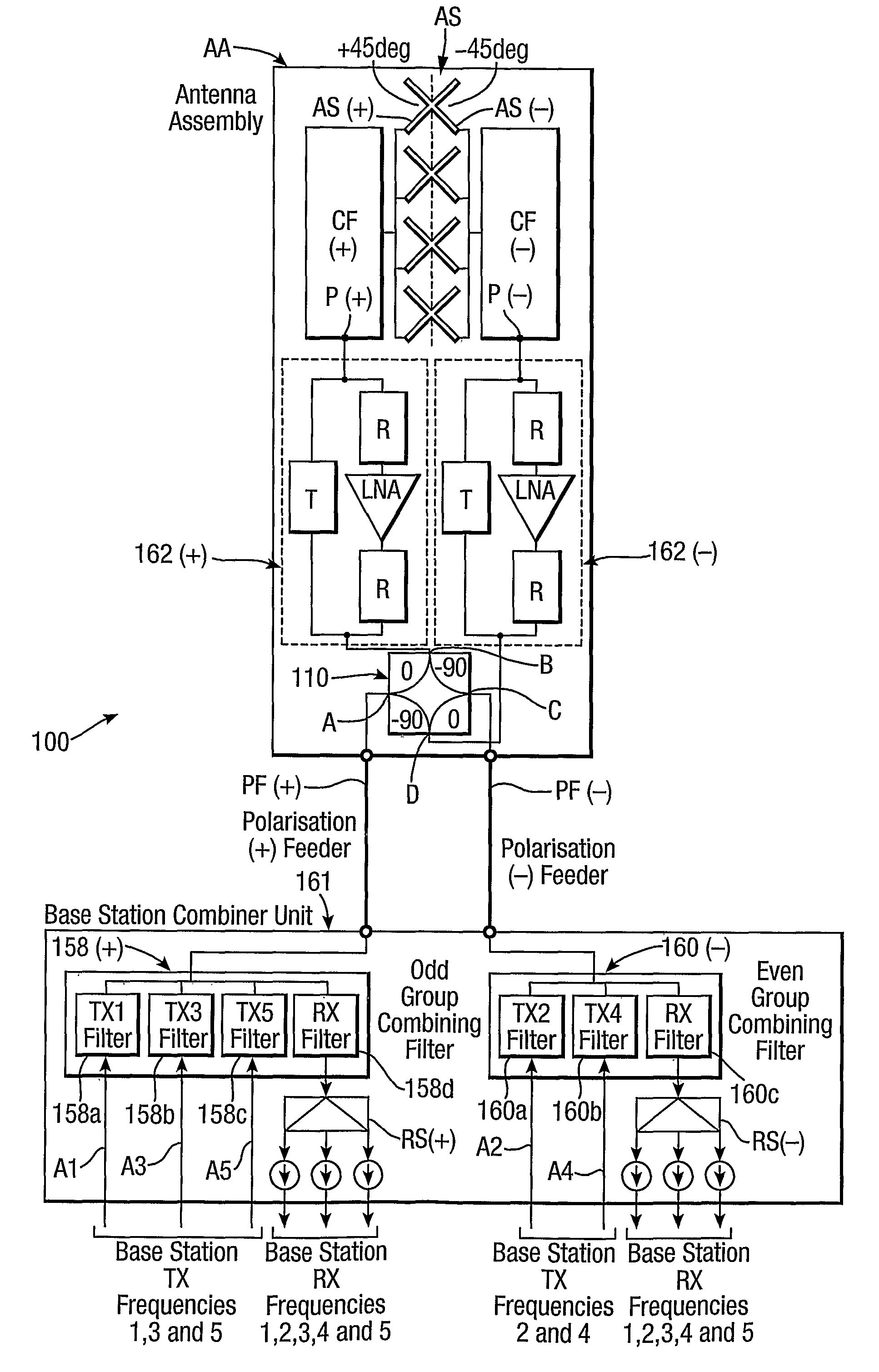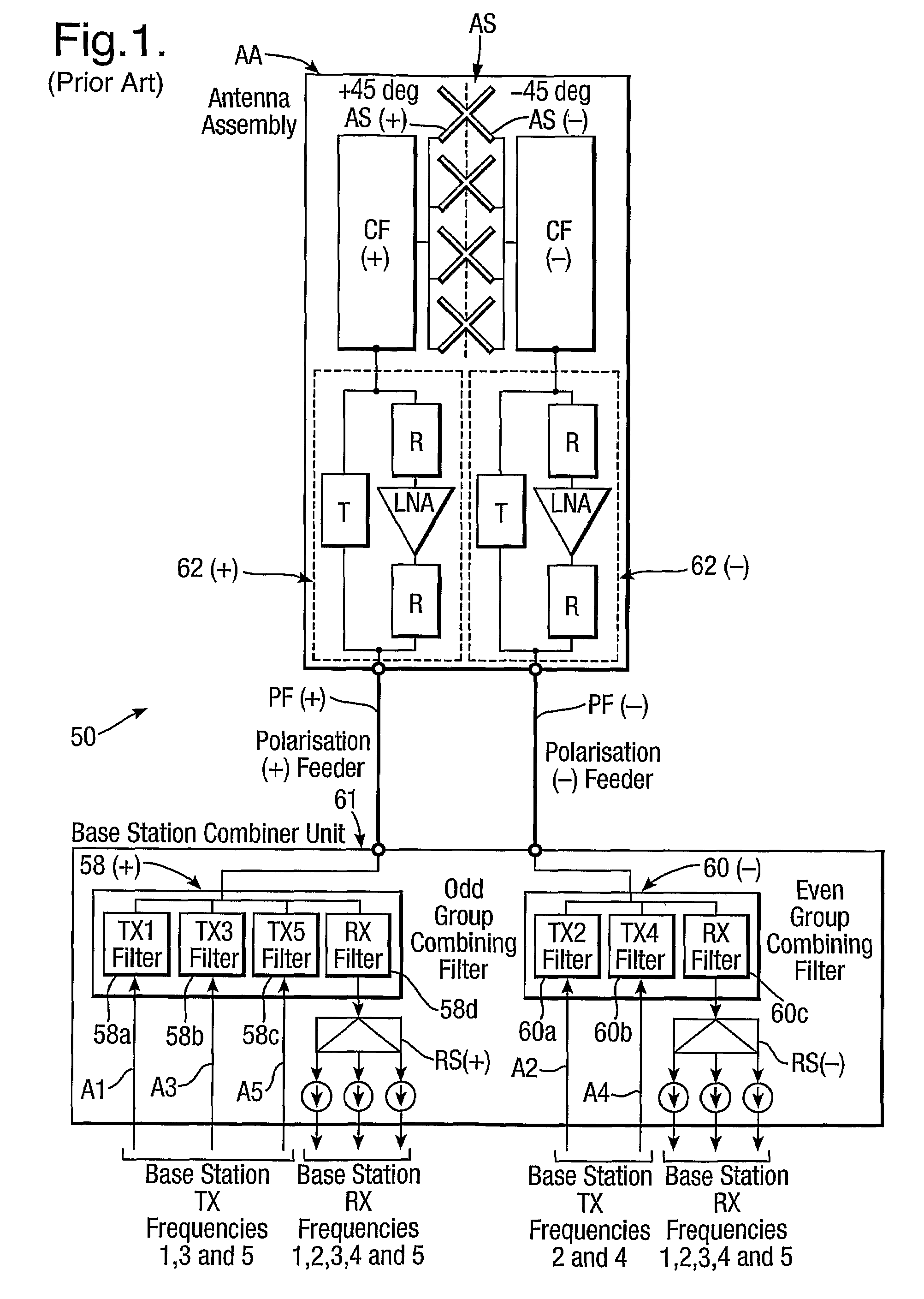Antenna system for sharing of operation
a technology of an antenna system and an antenna array, applied in the direction of polarised antenna unit combinations, individually energised antenna arrays, polarisation/directional diversity, etc., can solve the problems of introducing 50% power loss for each 3 db combiner, and reducing the flexibility of signal polarisation options
- Summary
- Abstract
- Description
- Claims
- Application Information
AI Technical Summary
Benefits of technology
Problems solved by technology
Method used
Image
Examples
embodiment 100
[0088]FIG. 5 shows a further embodiment of an antenna system of the invention indicated generally by 200. It provides circular polarisation for transmit signals and slant polarisation for received signals. It is equivalent to the earlier embodiment 100 described with reference to FIG. 2 with additional transmit filters T and changes to connections to a quadrature hybrid 210 inserted in transmit signal paths. Parts equivalent to those described with reference to FIG. 2 are like referenced with—in the case of numerical references only—a prefix 200 replacing 100. Elements in FIG. 5 which are equivalent to and have the same mode of operation as like referenced elements of FIG. 2 will not be described. Description of FIG. 5 will be directed to aspects of difference.
[0089]Ignoring the additional transmit filters T, the main change to the antenna system 200 compared to the earlier embodiment 100 is that received signals are now not connected to the hybrid 210, they bypass it. Transmit sign...
embodiment 200
[0092]It is possible to produce another variant of the embodiment 200 by exchanging transmit and received signal paths: i.e. in the variant, transmit signals bypass the hybrid 210 and received signals pass through it instead of vice versa. Consequently, the variant is preferentially sensitive to received signals with circular polarisation; transmit signals are radiated from mutually orthogonally slant polarised antenna dipole elements, and therefore become orthogonal slant polarised signals. Rearranging FIG. 5 to implement this is straightforward and will not be described.
[0093]The embodiment 100, FIGS. 3 and 4, the embodiment 200 and the variant referred to above demonstrate that the invention provides control over polarisation in one of or both of transmit and receive modes for a variety of antenna types. In particular, it is possible to use an antenna stack with orthogonal antenna elements giving e.g. +45 degree polarisation and −45 degree slant polarisation but with prearranged ...
PUM
 Login to View More
Login to View More Abstract
Description
Claims
Application Information
 Login to View More
Login to View More - R&D
- Intellectual Property
- Life Sciences
- Materials
- Tech Scout
- Unparalleled Data Quality
- Higher Quality Content
- 60% Fewer Hallucinations
Browse by: Latest US Patents, China's latest patents, Technical Efficacy Thesaurus, Application Domain, Technology Topic, Popular Technical Reports.
© 2025 PatSnap. All rights reserved.Legal|Privacy policy|Modern Slavery Act Transparency Statement|Sitemap|About US| Contact US: help@patsnap.com



